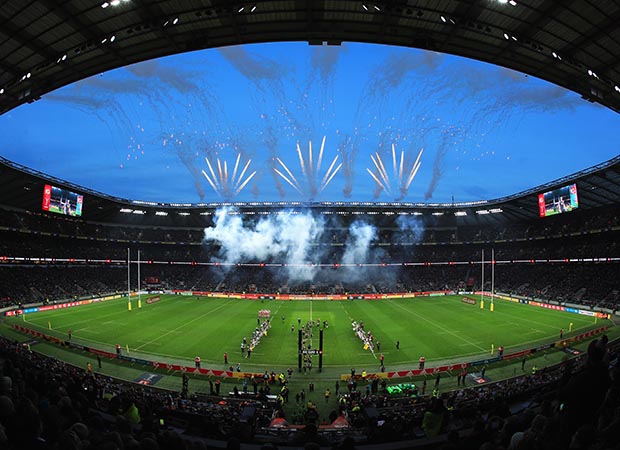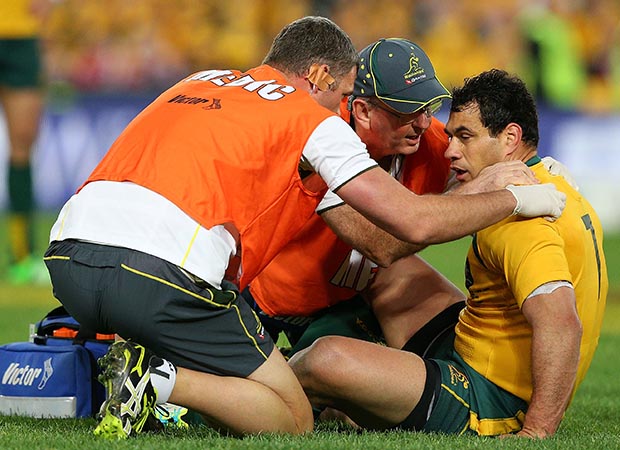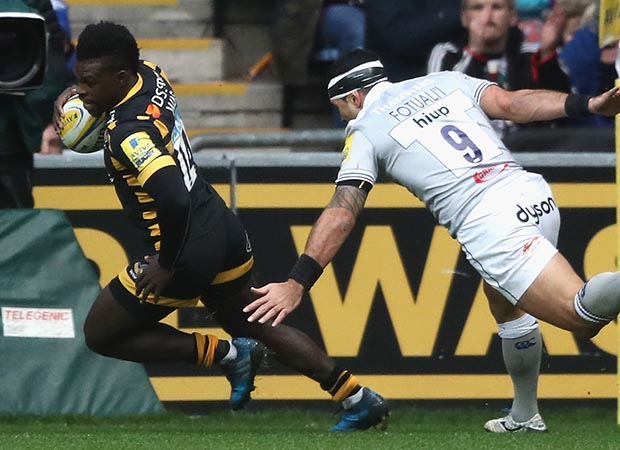 Rugby Union in England, Wales, Scotland and Ireland has a host of reasons to be cheerful in 2017. At the apex of any survey of the New Year is a Lions squad which should have the talent, and the experience, to become the first Northern Hemisphere tourists to win a series in New Zealand since 1971. More imminently, there is plenty of electricity around the prospect of the most competitive Six Nations since Italy joined the tournament 17 years ago.
Rugby Union in England, Wales, Scotland and Ireland has a host of reasons to be cheerful in 2017. At the apex of any survey of the New Year is a Lions squad which should have the talent, and the experience, to become the first Northern Hemisphere tourists to win a series in New Zealand since 1971. More imminently, there is plenty of electricity around the prospect of the most competitive Six Nations since Italy joined the tournament 17 years ago.
If England’s resurgence under Eddie Jones is to move to the next level with back-to-back Grand Slams they will have to stretch their unbeaten run to a world record of 19 consecutive wins. This will include a showdown in Dublin against an Ireland side that brought New Zealand’s record 18-match run to a halt in Chicago.
England and Ireland are pre-Six Nations favourites, but top billing is always fraught with danger, and this year there will be more hazards because the Northern Hemisphere’s flagship tournament has become more exacting. After an age in the doldrums the Scots have started to get some wind in their sails, and the French have also showed signs of stirring following the appointment of Bernard Laporte as FFR president. With Wales capable of shrugging off the stale crust that has encumbered them recently there is a genuine thrum of anticipation.
Alongside the annual Six Nations jamboree there are also record crowds and growing interest in the club game. This was reflected in England in bumper attendances for regular Premiership fixtures over the Christmas holiday period of 77,000 at Twickenham for Harlequins against Gloucester, while 26,000 watched Wasps and Bath share eight tries between them at the Ricoh. On the other side of the Irish Sea, another 26,000 fans turned out to see Munster beat Leinster at Thomond Park.
Add to that wall-to-wall broadcast and Press coverage, as well as strong commercial and sponsorship support for elite as well as community rugby, and there are plenty more positives than negatives.
That is why this game should resist the modern vogue among the chattering classes to paint everything in an apocalyptic shroud.
The attitude and commentary that goes with it is constantly in panic mode, encouraging an edge-of-the-precipice mentality. Rather than adopting a fearful outlook our sport should kick it into touch, not least because it breeds confusion and a lack of resolve where realism, and a willingness to act decisively to tackle the big issues, is required.
No one is pretending that everything in the garden is rosy, or denying that there is a list of problems in Rugby Union that need fixing, some urgently. However, the heartbeat of the game is strong, and most of its team values still hold good, even though some are under attack in the professional era.
If Northern Hemisphere rugby is travelling well, by comparison its equivalent south of the equator has hit some turbulence. There is the sense that double world champions New Zealand are propping up a SANZAAR structure that would collapse without their presence.
With South African rugby in freefall due to the imposition of a race-based quota system – and an exodus of elite players (mainly white) to Europe and Japan caused by improved earning power – New Zealand’s arch-rivals have been reduced to also-rans.
Whether this becomes an endemic weakness, or is addressed and South Africa is restored quickly as a major power, will depend mainly on whether they stay part of the SANZAAR block or take the strategic decision to align more closely with European rugby.
If the European route is available to South Africa it would mean that the Rugby Championship would shrink, and the already struggling Super Rugby format would become less viable. The upside is it might encourage Australia and New Zealand to build a genuinely competitive Anzac league structure – perhaps along Premiership lines – with promotion and relegation.
There are enough smart rugby brains Down Under to develop a competitive structure that enthuses broadcasters and fans alike, and offers a vibrant competitor to Aussie Rules, Rugby League and football/soccer.
However, the bleating that New Zealand and Australia are being pillaged of rugby talent by rich French and English clubs has an irony to it.
In the build-up to the game turning professional in 1995 those two countries – knowing that their new tournaments were underpinned by millions of Rupert Murdoch dollars – took a ‘devil take the hindmost’ approach to pushing forward the pro agenda, irrespective of the difficulties Northern Hemisphere nations had in handling the sea-change.
Now, just over 20 years later, it is European rugby in the driving seat in terms of the volume of commercial support, support base, and the quality and variety of tournaments in the pro era, and the Southern Hemisphere which is lagging behind.
It is just as well that there is a recognition in this part of the world that Rugby Union has to be an international co-operative in order to thrive – although, quite rightly, there has been a refusal on the part of northern nations to be dictated to by New Zealand and Australia over appearance money, or a global season.
The structure of the international game is one of a number of thorny issues that the sport has to get to grips with over the next year.
Global Season
Expect tinkering rather than a solution when World Rugby meet this month, however the global season debate is going to generate plenty of heat before a new long-term calendar is published in 2019 – and the battle lines will start being drawn in 2017.
What happens to the Lions is crucial, because after the World Cup their tour is one of the biggest cash cows in the sport. The Lions can no longer be tacked on to the end of every four-year cycle with the touring side hamstrung from the start by inadequate preparation time.
The biggest impediments to a global season are an overcrowded international calendar, and Southern Hemisphere attempts to push the idea of summer rugby in the north while refusing to contemplate it in their own back yard. The autumn series and summer tour scheduling currently seem to satisfy no-one, with teams playing multiple times in one season, and then often not playing again for three years.
The overcrowded calendar is caused mainly by Test fixtures being tolerated by World Rugby outside their own international windows because they raise much-needed revenue. However, as long as World Rugby refuse to impose heavy fines on transgressors the ground their global rugby strategy rests on will be continuously undermined.
A global season that satisfies no-one is not worth having, so park it until World Rugby have a master plan and the mandate to get tough.
Concussion
 This is one of the biggest issues facing the game and it is crucial that it gets to grips with it now, before a player dies from a brain haemorrhage caused by a repeat blow to the skull (second impact syndrome) when he should have been off the field.
This is one of the biggest issues facing the game and it is crucial that it gets to grips with it now, before a player dies from a brain haemorrhage caused by a repeat blow to the skull (second impact syndrome) when he should have been off the field.
During the 2013 Lions series the concussion issue was highlighted after George Smith, above, was knocked cold in a head-on-head collision with Richard Hibbard, but after being helped off, the Wallaby openside came round and a few minutes later was allowed back on the pitch. When, three years later – despite a media campaign exposing the dangers of concussion – a similar scenario unfolded after the Wales wing George North was knocked out playing for Northampton against Leicester and allowed to return to the field, the alarm bells went off.
Somehow agreed protocols concerning head injuries were not applied despite everyone at Welford Road bar the Saints medics having seen on the big screen that North had been knocked unconscious. To make matters more fraught, North has a history of concussion.
When a Premiership/RFU review panel decided just before Christmas that the club should not be sanctioned, World Rugby stepped in to ask for an explanation. It should not take them long to over-rule the panel and fine Northampton for faulty compliance. However, they should then answer this question: How come amateur boxing has a mandatory 28 day rest period for knock-outs and Rugby Union does not?
Disciplinary system loses sight of intent
The disciplinary system is in a tangle, and while the TMO referral has clear benefits there are signs that it also has drawbacks, the most significant being the undermining of the authority of referees.
When it comes to foul play – such as in the aerial collisions and a high tackles that are currently in the spotlight – the guidelines are already in the law book. The key issues are whether there is malicious intent, or reckless endangerment, with the former carrying a red card tariff and the latter, except in extreme instances, a yellow.
It is up to the referee – with the assistance of the TMO if he requires it – to make that judgement call. Using that yardstick, Tusi Pisi’s collision with Jamie Shillcock in last weekend’s Bristol the Worcester game should have been yellow, not red.
Instead, referees are being dragooned into following safety-first edicts rather than making their own assessment, with TMOs often operating as a Big Brother adviser. We all know that players make mistakes, and that split-second timing in rugby is crucial. If it is slightly out, even the best players look clumsy. Ball-carriers make mistakes too, ducking low into tackles so that an arm aimed initially at their ribcage hits their head.
Human error, as in accidental clashes and mis-timed tackles, are part of rugby and should not always end in cards – especially reds.
League of gentlemen?
One New Year’s resolution for match officials is zero tolerance for players who operate outside the spirit of the game. Constant appealing of decisions to referees and assistant referees should incur a penalty, with a ten metre march-back, and then a yellow card. The ten metre march for dissent is a great deterrent, and one that referees do not utilise enough – especially at a time when there is more chat on the pitch than on the Graham Norton show.
Simulation, as in diving or play-acting to gain advantage should be an immediate yellow card – and if there is a second simulation offence from any member of the same team, a red card.
One size doesn’t fit all
 The eight-man bench is currently the main reason why teams can afford muscle-bound forwards who cannot last the pace for the full 80 minutes. It’s time to cut the replacements bench back down to size, with a prop who can cover both sides, a hooker, and two more utilities.
The eight-man bench is currently the main reason why teams can afford muscle-bound forwards who cannot last the pace for the full 80 minutes. It’s time to cut the replacements bench back down to size, with a prop who can cover both sides, a hooker, and two more utilities.
Four replacements would help to restore the aerobic and attritional aspects to Rugby Union, moving the balance back towards movement rather than muscle. That crucial equilibrium should never have been sacrificed to give coaches excuses to select poorly by giving them half a new team in waiting.
Similarly, it’s great to see that in a game that has moved steadily at pro level towards players being super-sized there is still room for the little big men. Christian Wade, above, and his scintillating hat-trick for Wasps in their recent win over Bath suggested that England – and the Lions – have an answer to the brilliance of pint-sized All Black winger, Nehe Milner-Skudder.
Passport to success
One shaft of sanity in the fog over international eligibility is the unilateral declaration by ‘Mad Bernie’ Laporte that France will only select players who hold a French passport. Laporte explained his decision to circumvent World Rugby’s damaging three-year residency rule as “a political decision to stop playing foreign players in the national team”.
If it brings an end to the flags-of-convenience charade that has cheapened international rugby’s currency for more than a decade it will be a decisive move for the better.
Here’s wishing The Rugby Paper’s readers, and this great game we follow, a happy and healthy New Year.























